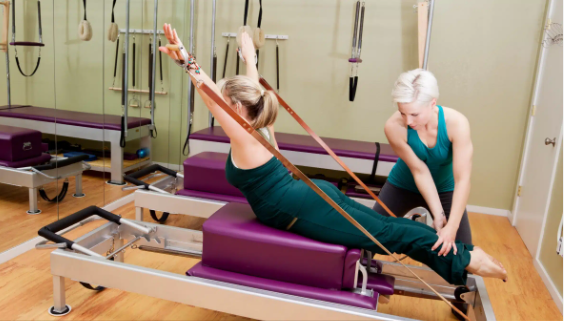Scoliosis, a condition characterized by abnormal sideways curvature of the spine, can significantly impact spinal health and overall well-being. While it presents challenges, there are various approaches to managing scoliosis, one of which is through Pilates. Pilates offers targeted exercises aimed at strengthening the muscles surrounding the spine, which can help improve posture, reduce pain, and enhance flexibility.
Understanding Scoliosis:
Scoliosis comes in various forms, ranging from mild to severe. It affects individuals of all ages, with causes including congenital factors, neuromuscular conditions, or idiopathic origins. The curvature of the spine can lead to uneven shoulders, hips, and rib cages, affecting posture and potentially causing discomfort or pain. Strengthening the muscles around the spine is crucial for managing scoliosis and minimizing its impact on daily life.
Introduction to Pilates:
Pilates is a holistic exercise system developed by Joseph Pilates in the early 20th century. It emphasizes core strength, flexibility, and body awareness through controlled movements and breathing patterns. The principles of Pilates—centering, concentration, control, precision, breath, and flow—make it a suitable practice for addressing spinal issues like scoliosis.
Benefits of Pilates for Scoliosis:
Pilates offers numerous benefits for individuals with scoliosis. By focusing on strengthening the core muscles, Pilates helps support the spine and improve overall stability. Additionally, Pilates exercises promote flexibility and mobility, which can be particularly beneficial for individuals with scoliosis who may experience stiffness or restricted movement. Through consistent practice, Pilates can contribute to pain relief and better posture, enhancing quality of life for those with scoliosis.
Key Pilates Exercises for Scoliosis:
Several Pilates exercises target the muscles surrounding the spine, making them valuable additions to a scoliosis management routine. Examples include the Pilates Hundreds, which engage the abdominal muscles while promoting spinal articulation, and the Swan Dive, which strengthens the back extensors while encouraging thoracic extension. Modifications can be made to accommodate different levels of scoliosis severity, ensuring exercises are safe and effective for individuals with varying needs.
Tips for Incorporating Pilates into Scoliosis Management:
Consistency is key when incorporating Pilates into a scoliosis management plan. Aim to practice Pilates exercises regularly, gradually increasing intensity and difficulty as strength and flexibility improve. It’s essential to listen to your body and work within your comfort level, seeking guidance from qualified instructors experienced in adapting Pilates for individuals with scoliosis. Additionally, complement Pilates practice with other forms of exercise and therapies recommended by healthcare professionals for comprehensive scoliosis management.
Takeaway
Pilates offers a promising avenue for individuals with scoliosis to strengthen the muscles around the spine, improve posture, and enhance overall well-being. By incorporating Pilates into a comprehensive scoliosis management plan, individuals can experience positive changes in their physical health and quality of life. Whether mild or severe, scoliosis can be effectively managed with the right combination of exercises, therapies, and support.
Take charge of your scoliosis journey with Core Fitness and personalized Pilates for scoliosis sessions.

